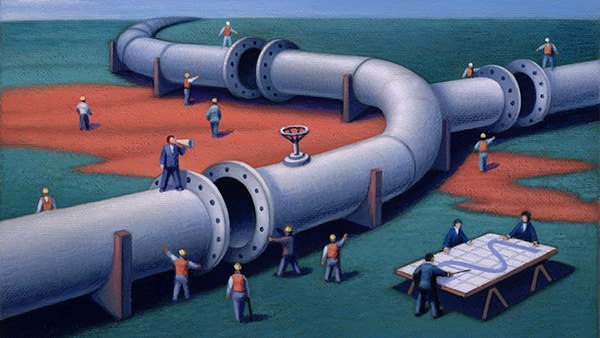Part Three of a Three-Part Series: 3 Reasons a Mid-Level Program is Critical
Creating and implementing a mid-level program is critical for your organization… and for your donors. In Part 1 of this series I talked about how important it is to keep your major gift pipeline flowing, and that a mid-level program is designed to unclog it by increasing donor retention, revenue per donor and moving more qualified donors into major gift portfolios.
In Part 2, I stressed that a robust mid-level program actually honors the donor by acknowledging donors’ increased giving and engagement by starting to reach out to them in a more personal, one-to-one way. This in turn allows the donor to engage with you on a deeper level and increases their giving, because you’re challenging them much more than you would with your regular direct-response program.
Today, I want to talk about how creating a mid-level program brings your entire development team together.
Richard and I like to say that a good development department’s mantra should always be, “We all need each other.” Unfortunately, in many, many cases we see the opposite happening. As the organization grows, fundraising becomes compartmentalized, and siloes of work begin to form. Over time, those siloes are like two-foot-thick steel walls.
What happens is that the direct-response team doesn’t talk to major gifts. No one talks to one another… yet they do indeed need each other’s programs to perform at a high level, or their own program will suffer. Think about it. Major gifts needs the direct-response program, because that’s where major donors eventually come from; and the direct-response program needs major gifts because they increase the long-term value of those donors, and it justifies the cost of the direct-response program.
Yet these folks barely talk to one another, and in the worst case, they are often suspicious of each other’s work.
The beautiful thing about a mid-level program is that it brings the direct-response and major gift programs together. When creating and planning for a mid-level program, both teams need to be around the table because they both have different objectives – and for the first time they have to think about how to move donors through the pipeline.
Our experience in helping non-profits create and manage mid-level donor programs has been overwhelmingly positive when we bring both disciplines to the table. For the first time, both the direct-response and the major gift teams have to work together on all sorts of issues around donor communication, protocols, and donor transition… not to mention agreeing on overall objectives and performance indicators of the program.
A high-functioning mid-level program results in a high-functioning development team that is working together for what is best for the donor. Not the organization… the donor. (Tweet it!) What we’ve found at Veritus is that the creation of a mid-level program not only increases donor retention, boosts value per donor and moves more donors into major gift portfolios; it also enhances the organization’s ability to create a culture of philanthropy.
Now, are you ready to start your mid-level donor program?
Jeff
PS — If you need help with creating your own mid-level donor program, we can help you. Click here and talk to Amy about how we can provide hands-on help for you. Or if you want to do this on your own, but need the training… click here to find out about our Mid-Level Program Certification Course at our Major Gift Academy. It starts Monday, April 8th!
Read the whole series: 3 Reasons a Mid-Level Program is Critical:
- Mid-Level Fundraising Keeps the Major Gift Pipeline Flowing
- Mid-Level Fundraising Honors the Donor
- Mid-Level Fundraising Brings Your Development Team Together (this post)







0 Comments